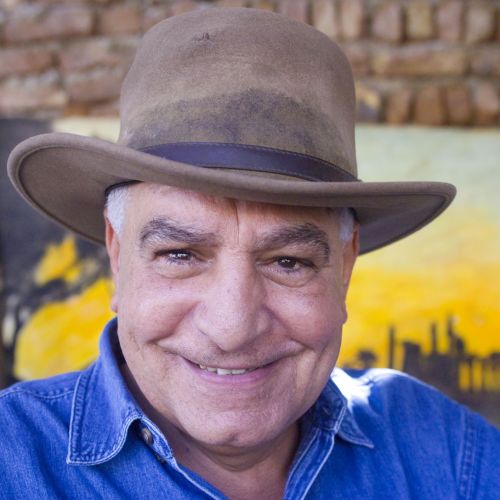Dr. Zahi Hawass
Introduction
Dr. Zahi Hawass is one of the most recognizable names in the world of Egyptology. Born on May 28, 1947, in the small Egyptian town of Damietta, he rose to international fame not only as an archaeologist but also as a global ambassador for ancient Egyptian history and culture. Often compared to the fictional “Indiana Jones” for his adventurous spirit, signature denim attire, and wide-brimmed hat, Hawass combined scholarly work with an unmatched ability to engage the public. Over the decades, he has held leading positions such as the Secretary General of Egypt’s Supreme Council of Antiquities and later as Minister of Antiquities, where he became a central figure in protecting, excavating, and showcasing Egypt’s cultural treasures to the world.
Area of Expertise
Dr. Zahi Hawass’s career spans multiple disciplines within archaeology and heritage management. His primary specialization is Egyptology, with a deep focus on ancient mythology, funerary practices, and the pantheon of gods and goddesses that shaped Egyptian belief systems. His excavations at Giza, Saqqara, Bahariya Oasis, and the Valley of the Kings brought forth invaluable insights into how ancient Egyptians lived, worshipped, and built their monumental structures.
Hawass is also a pioneer in applying science to archaeology. Through the Egyptian Mummy Project, he employed CT scans and DNA testing to answer questions surrounding royal lineages and causes of death, shedding light on figures like Tutankhamun and Queen Hatshepsut. Beyond excavation, he is a passionate cultural advocate, working tirelessly to recover stolen or displaced artifacts such as the Rosetta Stone and the bust of Nefertiti. His expertise lies not only in uncovering the past but also in ensuring Egypt’s heritage remains safeguarded for future generations.
Books & Publications
Dr. Zahi Hawass has authored more than sixty books that range from richly illustrated coffee-table volumes to detailed academic studies. His works are published in several languages, allowing his scholarship and storytelling to reach a global audience. Notable titles include Valley of the Golden Mummies (2000), Secrets from the Sand (2003), Tutankhamun and the Golden Age of the Pharaohs (2004), and Mountains of the Pharaohs (2006). Each of these books blends historical depth with accessible narrative, appealing to both scholars and enthusiasts of ancient Egypt.
In addition to these popular works, Hawass has written extensively in academic journals, contributed to catalogues for major museum exhibitions, and even produced children’s books introducing younger generations to the wonders of pharaonic civilization. One of his important collaborative publications, Scanning the Pharaohs (2015), explored the use of CT imaging on New Kingdom mummies, pushing the boundaries of archaeological science. Through his writing, Dr. Zahi Hawass ensures that Egypt’s legacy is understood in both scientific and cultural contexts, making him one of the most prolific voices in modern archaeology.
Research & Contributions
The legacy of Dr. Zahi Hawass is deeply tied to his groundbreaking discoveries and innovative preservation strategies. At Giza, he uncovered the tombs of the pyramid builders, offering clear proof that the pyramids were constructed by Egyptian laborers rather than enslaved peoples, dismantling long-held myths. His work at Bahariya Oasis led to the discovery of the Valley of the Golden Mummies, where more than 250 mummies were unearthed in what remains the largest cache ever found at a single site.
Equally significant was his leadership in the Egyptian Mummy Project, which identified previously unknown royal remains and clarified mysteries surrounding Tutankhamun’s life and death. Hawass also directed excavations that revealed the so-called “Lost Golden City” of Luxor, a settlement dating back to Amenhotep III, considered by many as one of the greatest finds of the 21st century.
Dr. Zahi Hawass’s contributions to Egyptology have earned him an impressive list of honors across the globe. He has been the recipient of the Golden Plate Award from the American Academy of Achievement, the Order of Arts and Letters from France, and the Grand Cross of the Order of the Sun from Peru. His work in cultural heritage advocacy was recognized by Time Magazine, which included him among the 100 most influential people in the world.
He has also received honorary doctorates from universities across Asia, Europe, and North America, underscoring the international impact of his career. In the world of broadcasting, his involvement in television specials earned him an Emmy Award, further highlighting his role in bridging scholarship with mass media. In recent years, his name has been honored through the creation of the Dr. Zahi Hawass Award for archaeologists and restorers, ensuring his legacy continues to inspire the next generation of heritage professionals.
In addition to fieldwork, Hawass developed site management plans that balance tourism with preservation at iconic monuments such as the temples of Kom Ombo and Edfu. His strong media presence, including appearances in National Geographic, Discovery Channel, and Netflix documentaries, expanded public interest in archaeology and helped cement his reputation as a storyteller who could make the past feel alive.
Awards & Recognitions
Dr. Zahi Hawass’s contributions to Egyptology have earned him an impressive list of honors across the globe. He has been the recipient of the Golden Plate Award from the American Academy of Achievement, the Order of Arts and Letters from France, and the Grand Cross of the Order of the Sun from Peru. His work in cultural heritage advocacy was recognized by Time Magazine, which included him among the 100 most influential people in the world.
He has also received honorary doctorates from universities across Asia, Europe, and North America, underscoring the international impact of his career. In the world of broadcasting, his involvement in television specials earned him an Emmy Award, further highlighting his role in bridging scholarship with mass media. In recent years, his name has been honored through the creation of the Dr. Zahi Hawass Award for archaeologists and restorers, ensuring his legacy continues to inspire the next generation of heritage professionals.
Social Media Profiles
Despite his long career rooted in the sands of Egypt, Dr. Zahi Hawass remains active in the digital age, using social media to connect with audiences worldwide. His TikTok account shares short videos on artifacts, discoveries, and his ongoing campaigns to repatriate Egyptian treasures, attracting tens of thousands of followers. On Facebook, his official group provides a platform for enthusiasts to discuss excavations and upcoming events, while his YouTube channel, Experience Egypt – Dr. Zahi Hawass, hosts lectures, interviews, and virtual tours that make Egypt’s ancient wonders accessible from anywhere in the world.
This online engagement keeps his work in the public eye, especially among younger generations who may not follow traditional academic outlets. Through these platforms, Hawass continues to spark curiosity, share updates on archaeological projects, and emphasize the importance of protecting cultural heritage in an era of globalization and digital storytelling.
Bibliographic Sources
Hawass, Z. (n.d.). Biography. Retrieved from https://www.hawasszahi.com/bio
Wikipedia contributors. (2025). Zahi Hawass. Wikipedia. Retrieved from https://en.wikipedia.org/wiki/Zahi_Hawass
Egyptology.nbu.bg. (n.d.). Curriculum Vitae Dr Zahi Hawass. Retrieved from https://www.egyptology.nbu.bg/download/pochetni-doktori/curriculum-vitae-hawass.pdf
Basilinna. (n.d.). Zahi Hawass. Retrieved from https://www.basilinna.com/team/zahi-hawass
Goodreads. (n.d.). Books by Zahi Hawass. Retrieved from https://www.goodreads.com/author/list/198622.Zahi_Hawass
TikTok. (n.d.). Zahi Hawass (@drzahihawass). Retrieved from https://www.tiktok.com/@drzahihawass
Sada Elbalad. (2023). Japan Awards Zahi Hawass Honorary Doctorate in Humanities. Retrieved from https://see.news/japan-awards-zahi-hawass-honorary-doctorate-in-humanities






